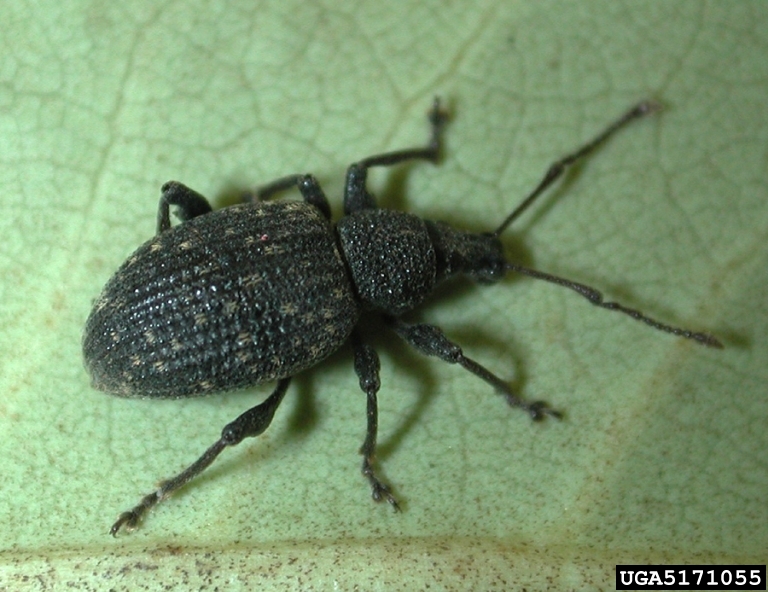Key Takeaways
- Color Combinations Aid Identification
Black bugs often have distinctive secondary colors or markings that help identify their species. Looking for specific color patterns (like black and white or red and black) is a crucial first step in determining whether the insect poses a threat to your trees. - Different Trees Attract Different Pests
Each tree species tends to attract specific insects – from woolly aphids on maples to peachtree borers on cherry trees. Understanding these common pest-tree relationships helps narrow down identification and treatment options. - Not All Black Bugs Need Treatment
While some insects like black vine weevils can cause significant damage, others may be harmless or only affect specific parts of the tree (like fruit). Professional identification helps determine whether treatment is necessary and what approach would be most effective.
Have you noticed tiny black bugs on your trees’ leaves or trunk? As a homeowner and tree lover, it can be frustrating to see your trees being attacked by insects. The good news is that, with the right information, you can identify what kind of bugs they are and how to treat them.
Many black bugs on trees are sap-sucking insects that feed on the tree’s sap. If you see an insect you don’t recognize, know that there are many species out there but we can help you narrow the list down.
One of the first ways to identify what type of bug you’re seeing is to look for secondary colors. So first, check if you are seeing red and black bugs, black and white bugs, or some other combination of colors. While most insects are harmless to trees, there are some species that can do significant damage. Therefore, it’s crucial to identify the little black bugs on your tree to determine whether they are harmful or not.
Call us at 703-573-3029 Request a Quote
Photo credit: Eric Rebek, FMC, Bugwood.org
Black Bugs on Maple Trees:
When it comes to tiny black bugs on maple trees, you may be dealing with aphids. A common aphid species that attacks maple trees is the woolly alder aphid, which likes to munch on silver maple trees. These bugs are tiny, bluish-black, and produce a “wooly” looking secretion as they feed on the sap of your tree. If you are experiencing this pest issue on your maple tree, we can help by providing treatment to suppress the population and boost your tree’s health.
Black Bugs on Cherry Trees:

Photo credit: Randy Cyr, Greentree, Bugwood.org
Ornamental cherry trees are a landscape staple in the DC metro area, so naturally, we get a lot of concerns from homeowners who notice black bugs on their cherry trees. In this case, you may be dealing with cherry fruit flies or cherry bark tortrix. The cherry fruit fly is a small, black fly that lays its eggs under the cherry fruit’s skin, damaging it in the process. Since most of the cherry trees in our area aren’t used for fruit-bearing purposes, this pest doesn’t require treatment, as it doesn’t harm the tree.
Peachtree borer and lesser peachtree borer, on the other hand, can cause significant damage to your tree’s bark during their larval stage. If you see a winged black bug that resembles a wasp with a single yellow band on its abdomen, you may be seeing an egg-laying adult peachtree borer. If you see a winged black bug with white stripes that resembles a wasp, you may be seeing the lesser peachtree borer. Preventative control of these pests is crucial during or before the larval stage, otherwise the tree is likely to suffer from gummosis and other health concerns.

Photo credit: Michael Reding, USDA Agricultural Research Service, Bugwood.org
Black Bugs on Shrubs:
If you’re seeing tiny black bugs on your rhododendron, taxus, euonymus, or holly shrubs, you may be dealing with black vine weevils. These insects are black and glossy, with a long snout and elbowed antennae. They tend to feed on bark (and sometimes roots), causing significant damage to your landscape plantings. If you find black vine weevils on your property, let us know and we can help!
In conclusion, identifying the little black bugs on your trees is the first step in treating them. Remember that keeping your trees healthy and well-maintained is the best way to prevent pest infestations. If you’re unsure about what kind of bug you’re seeing, it’s always best to consult with an specialist.
Not sure what kind of bugs you have? Talk to our experts today. A lot of pest issues can be identified with a couple of good photos. Call us to speak to an expert or request a quote online, and we’ll help you out.
Call us at 703-573-3029 Request a Quote

